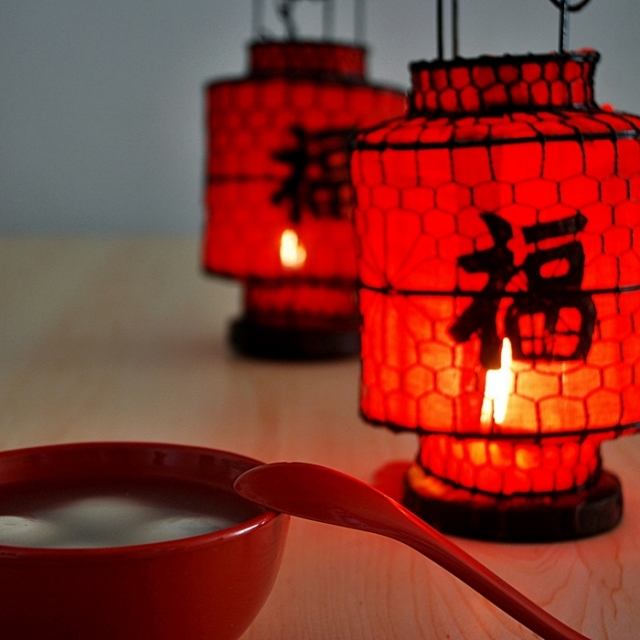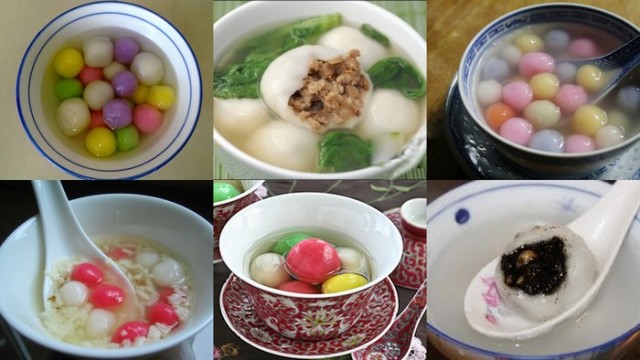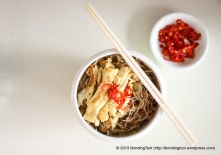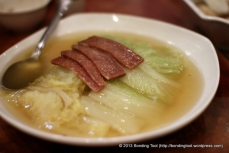The Lantern Festival Yuan Xiao Jie – 元宵节
Posted by Sam Han on February 24, 2013 · 2 Comments
Yuan Xiao Jie 元宵节 also known as The Lantern Festival which marks the end of Chinese New Year celebrations should not be confused with Mid-Autumn Festival popularly coined as Lantern Festival also. Yuan Xiao Jie falls on the 15th day of Zhengyue (first month of the Chinese Lunar Calendar) is also known as Chap Goh Mei (literally 15th evening) in Singapore. In China, it is also the Chinese Valentine’s Day.
There are many versions for the association of this day.
Version 1: The Lantern Festival
The story behind The Lantern Festival… Once, some hunters caught and killed an animal belonging to the Jade Emperor of China. Upon knowing the incident, the emperor got furious and ordered the whole town to be burnt to the ground. The princess heard of this and wittingly devised a rescue plan. Unable to defy her father, she went to look for the army general in charged. As the general also came from that town, he was grateful to be involved in the conspiracy. Together, they rounded the villagers and told them to hang lanterns everywhere. The general went back to the palace and told the emperor he had set the town on fire. The emperor saw the flickering lights swaying in the distant and was tricked into believing that the town was already on fire. The ploy had worked and till today, the Chinese honour the kind-hearted princess by hanging lanterns on this day every year. They also gather in gardens to admire lanterns and riddles associated with these handicrafts. The brightest lanterns were also symbolic of good luck and hope.Version 2: Yuan Xiao Jie
Traditional and modern Chinese families observe Yuan Xiao Jie by having a simple family gathering where the young and elderly meet for a bowl of Yuan Xiao (元宵 as called by the northerners) or Tang Yuan (汤圆 as called by the southerners). Yuan Xiao is a savoury Chinese snack made of glutinous rice balls filled with minced meat and vegetables in broth while Tang Yuan is the sweet version commonly filled with walnuts, red dates, black sesame, red bean or peanut pastes. The more exquisite ones have osmanthus flower filling in light sugar syrup.Originally known as Yuan Xiao named after a palace maid who made very good sticky rice ball snack during the Han Dynasty, the story goes like this…
Dongfang Shuo 東方朔, a writer and Taoist magician of the mid-Former Han period 前漢 (206 BCE-8 CE) was a favorite adviser of the Emperor Wu. One winter day, while he was in the garden, he heard a girl crying. Upon investigation, he saw the little maid getting ready to jump into a well to commit suicide. Dongfang Shuo stopped her and asked why. She told him her name was Yuan Xiao, a maid in the emperor’s palace and she never had a chance to see her family ever since she started working there. Yuan Xiao could not show her filial piety to her parents and this saddened her so much so she would rather die. Dongfang Shuo promised to find a way to let her meet with her family. Later, he left the palace to seek her family and told them about his plan to help Yuan Xiao. Afterwards, he set up a fortune-telling stall on the street. Due to his reputation, many people asked for their fortunes to be read but everyone got the same prediction – a calamitous fire on the 15th day of Zhengyue.
The rumor spread quicker than if real fire had started and soon everyone was worried about the future. The villagers asked Dongfang Shuo for help and he replied, “On the 13th lunar day, the God of Fire would send a fairy in red cloak riding a black horse near the palace to burn down the city. If you see the fairy, you should ask for her mercy”. On that day, Yuan Xiao’s sister pretended to be the red fairy. When the villagers asked for her help, she said that she had a decree from the God of Fire that should be taken to the emperor and if the God of Fire did not see the town in flames, she would be blamed. After she left, the villagers went to show the emperor the decree which stated that the city would burn down on the 15th day of Zhengyue. The emperor asked Dongfang Shuo for advice and he told the emperor that the God of Fire liked to eat sticky rice dumplings. Yuan Xiao who had a talent in cooking this dish should take charge of its preparation. The emperor should also order every household to prepare this snack as offering to the God of Fire and Yuan Xiao should go out into the city to check the quality of this snack prepared by the villagers. In addition, every house in the city should hang red lanterns and light up fire crackers to trick the God of Fire that earth was blazing.
The emperor had the plan executed precisely. On the 15th night of Zhengyue, people carrying lanterns were everywhere. Ignited fire crackers kept making lots of noise and it seemed as though the entire city was on fire. Yuan Xiao took the opportunity to go to her parents’ house and was reunited with them for a night. The next day, peace returned to the city as no punsihment came from the God of Fire. The emperor was so pleased he decreed that people should do the same thing every year. Since Yuan Xiao made the best rice balls, people named the day after her, Yuan Xiao Festival.
Version 3: Valentine’s Day
In ancient times, females of marriageable age were not allowed to step out of their homes except on this Yuan Xiao Jie where the emperor had decreed everyone must carry a lantern and go out to deceived the God of Fire.Young ladies were chaperoned in the streets and young men went in hopes of finding love on this special occasion where ladies were permitted out of their house. When the young man found someone to his liking, he then hires a matchmaker to act on his behalf for the lady’s hand in marriage. Modern state girls write their names & phone numbers on oranges (hopefully in permanent ink) and throw them into a river and the men who pick them up will become their spouse. Mass marriages through the years had been conducted on this date too. As time passed, the festival no longer has such match-making tradition but people still send love messages and gifts to their loved ones.
The modernisation and affluence of people led to creative ideas of sticky rice balls making and fillings. When I was young, I helped my grandmother make tang yuan that had no fillings. There were only pink and white balls boiled in palm sugar syrup with ginger slices and pandan leaves. These days, I have even seen Angry Birds Tang Yuan on sale…
Photos credit: Google Images
Information: Stories heard during younger days and others researched online.
P.S. Each tang yuan symbolises a year in age (longevity) so eating more increases your life span 🙂
Happy Yuan Xiao Jie!
Share this:
- Click to share on Facebook (Opens in new window)
- Click to share on Twitter (Opens in new window)
- Click to share on Pinterest (Opens in new window)
- Click to share on WhatsApp (Opens in new window)
- Click to share on Tumblr (Opens in new window)
- Click to share on Reddit (Opens in new window)
- Click to email a link to a friend (Opens in new window)
Related
Filed under Celebrations & Events, Desserts, Stories, Uncategorized · Tagged with Chap Goh Mei, dumplings, End of CNY, glutinous rice balls, meat, sticky dumplings, sticky rice balls, Stories and Myths, Tang Yuan, the lantern festival, vegetables, Yuan Xiao, Yuan Xiao Jie
Comments
2 Responses to “The Lantern Festival Yuan Xiao Jie – 元宵节”Leave a comment Cancel reply
This site uses Akismet to reduce spam. Learn how your comment data is processed.



































Fantastic post! I really enjoyed reading about the lantern festival 🙂
Thank you and happy you did 😀